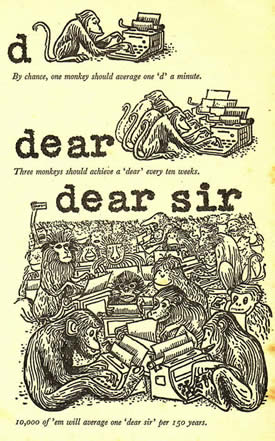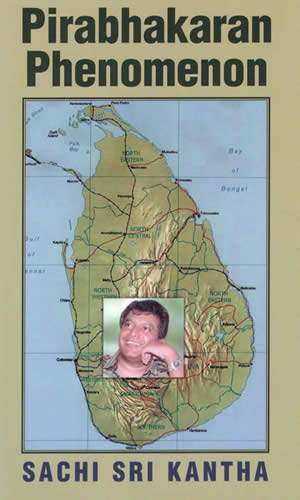Ilankai Tamil Sangam30th Year on the Web Association of Tamils of Sri Lanka in the USA |
|||
 Home Home Archives Archives |
Prabhakaran's Soma and Prabhakaran's Senseby Sachi Sri Kantha, May 25, 2009
The Oxford English Dictionary provides two definitions for the word ‘soma’.
Now as the controversy revolves around Prabhakaran’s soma (body), I’d rather focus on Prabhakaran’s sense, in this essay. At this moment, we have to make this distinction. Hindu scriptures preach that soma is bound to wither, but the sense will live forever. A sample is in the Bhagavad Gita (chapter 15, verse 8). In Indian philosopher Sarvepalli Radhakrishnan’s English translation and interpretation, the verse is as follows: Sareeram yad avaapnoti Yac caa’py utkraamatee svarah Grheetvai ‘taani samyaati Vaayur gandhaan ivaa ‘sayaat [Translation] When the Lord takes up a body and when he leaves it, he takes these (the senses and mind) and goes even as the wind carries perfumes from their places. [Interpretation] The subtle body accompanies the soul in its wanderings through cosmic existence. [Bhagavad Gita, Harper Collins Publishers, New Delhi, 2000 impression, originally published 1948, p. 329]. A Score Card of Prabhakaran’s Military Campaigns As one of the four biographers of Prabhakaran (the other three being M.R. Narayan Swamy, Adele Balasingham and P. Nedumaran, as far as I know)[for his early years see T. Sabaratnam], I consider it my onus to shed some light on Prabhakaran’s career and contribution to the Tamil cause. In recent news items, Prabhakaran’s career is conveniently condensed as a struggle for a separate Eelam state for 30-odd years. This condensation is deceptive, because of the missing details. Prabhakaran was the sole de facto and de jure commander in chief on the Tamil side. His opponents/adversaries had rotating tenures as de facto and de jure commander in chiefs. Here is a summary score card of Prabhakaran’s campaigns, prepared in the form of a boxing score card. Eelam War I. Period: 1983 July – 1987 May Opponent: de facto commander in chief – J.R. Jayewardene, de jure army commander in chiefs: T.I. Weerathunga, G.D.G.N. Seneviratne. Result: Draw. Indo-LTTE War in the North-East Sri Lanka. Period: 1987 October – 1990 March Opponent: de facto commander in chiefs – Rajiv Gandhi (until Nov. 1989) and V.P. Singh (until Mar. 1990), de jure army commander in chief: Krishnaswamy Sunderji Result: Technical Knock Out (TKO) to LTTE. Eelam War II Period: 1990 June – 1994 September Opponent: de facto commander in chiefs – R. Premadasa (until Apr. 1993) and D.B. Wijetunga (until Sept. 1994), de jure commander in chiefs – H. Wanasinghe, L.D.C.E. Waidyaratne, G.H. De Silva. Result: Decision on points to LTTE. Eelam War III Period: 1995 April – 2002 February Opponent: de facto commander in chief – Chandrika Kumaratunga, de jure commander in chiefs – G.H. de Silva, R. De S. Daluwatte, C.S. Weerasooriya, L.P. Balagalle. Result: Knock Out (KO) to LTTE. Eelam War IV Period: 2006 July – 2009 May Opponent: de facto commander in chief – Mahinda Rajapakse, de jure commander in chief – G.S.C. Fonseka. Result: Knock Out (KO) to SL armed forces. This is the way I’d score the LTTE’s performance from 1983 to 2009. Others are welcome to disagree with me, and it is their right to do so. Overall record: three wins, one loss and one draw. Prabhakaran’s Distinguishing Traits
When one reads the news analysis circulating in the past 8 days about LTTE leader Velupillai Prabhakaran, one is reminded about the probability chances for a group of monkeys working at a keyboard to get the saluation of a letter ‘Dear Sir’ correctly, as illustrated in the cartoon placed adjacently here. This cartoon originally appeared in the book authored by Darrell Huff (‘How to Take a Chance; The Laws of Probability’, Penguin Books, 1959, p.39). The Pseudo-Oracles and pundits have found the LTTE a convenient peg to hang their opinions and prejudices about every aspect of Tamil culture. Shamelessly, quite many of these pundits owe their career and fame to the LTTE’s exploits. Here is my eight point evaluation on Prabhakaran as the leader of Tamils. (1) He neither sold out nor short-circuited his original dream, like many of the earlier generation of Tamil politicians or his militant contemporaries (unlike G.G. Ponnambalam Sr., Amirthalingam, Uma Maheswaran, Padmanabha, Devananda et al.). In this, even C.N. Annadurai, the legendary founder of DMK, loses out to Prabhakaran. (2) He was a paradigm-shifter (like Annadurai in Tamil Nadu). (3) He was not a collaborator (unlike Kadirgamar or Devananda). (4) He was not a turn-coat (unlike Muralidharan aka Karuna). (5) He had flair and charisma that he earned in zn old-fashioned route. (G.G. Ponnambalam Sr. had flair and charisma from 1944 to 1948; S.J.V. Chelvanayakam had charisma but no flair from 1956 to 1977; Amirthalingam had flair but no charisma between 1977 and 1981.) (6) He militarily confronted two established post-colonial states, Sri Lanka and India (None of his Sinhalese military rivals can brag on this issue.) (7) He was an innovative exemplar and established a legitimate poor warrior’s army from the meager resources available to him. (8) Tenacity and fidelity to the cause he believed in were his hallmarks. What Did the LTTE Achieve? ‘Pie in the Sky’ banalities delivered from the pulpit by President Mahinda Rajapakse or Prime Minister Manmohan Singh or by pulp fiction writers (the likes of B. Raman, D.B.S. Jeyaraj) will never help to settle the grievances of Eelam Tamils. Among the few materials I checked, the House of Hindu stable of opinionists have piled up their thoughts. I give credence to these, as they are Tamils and they have had the benefit to read and write about the Tamil material available to them. For those interested in checking, I cite their articles on the LTTE’s recent debacle first, before providing my counter-point. (1) Nirupama Subramanian: ‘Witness to one extended roller-coaster ride’. The Hindu, May 19, 2009. (2) V.S. Sambandan: ‘A cavalcade of deadly blunders’. The Hindu, May 19, 2009. (3) D.B.S. Jeyaraj: ‘Sri Lankan Tamils in a post-war scenario’. The Hindu, May 21, 2009. While blaming the LTTE and Prabhakaran for everything since 1980s, Nirupama Subramanian and Sambandan were abysmally silent on the following issues, such as:
Jeyaraj in particular has written, “The Tamils need to remind themselves that the LTTE, despite their prolonged campaign, has ultimately achieved nothing for the Tamil people.” This in turn, reminds me of the popular Tamil idiom; ‘Iravu muzhuthum Ramayanam; vidintha pin keddaanaam Raman Seethaiku enna murai?’ [Whole night listening to Ramanayanam; at dawn, asked an idiot, what’s the relationship between Rama and Sita?] I disagree with Jeyaraj’s wholesale denunciation of the LTTE. Here is my list of ten items of what LTTE has achieved: (1) Proving that the Sinhalese decision-makers in politics and the military are racists to the core when it comes to military recruitment, and equal opportunity for Tamils (both indigenous and Indian-origin) is a mirage. Technically, the 160,000-strong Sri Lankan armed forces should have 24,000 Tamils (~15% of the total population). Unless and until this disparity is remedied, and the journalists and analysts (both indigenous and international varieties!) have the courage to emphasize this ad nauseam, none can dare to point an accusing finger against Prabhakaran for establishing his LTTE army. In USA, the representation of Blacks in armed forces exceeds their population ratio. (2) Creating careers for a whole bunch of journalists, as defense correspondents, defense critics, etc. (3) Creating careers at the international level as terrorism specialists for academics in universities and think tanks (the likes of Robert Pape, Bruce Hoffman, Peter Chalk, Michael Roberts, Rohan Gunaratna and Dayan Jayatilleka, etc.) (4) Creating post-retirement careers for a cart-load of intelligence operatives (the likes of B. Raman, R. Hariharan) in Sri Lanka, India and Pakistan. (5) Showing that Buddhist tenets have apparently no value in the militarized Sri Lankan society and the Buddhist priests are openly parochial. Note that the Theravada Buddhist tenets have lost their value are proven in the militarized Myanmar and Thailand societies as well. A Nobel peace laureate Aung San Suu Kyi has been languishing under house arrest for years. (6) Exposing the endemic corruption among Sinhalese dealmakers in the military establishment. Here is a sample that made news 22 years ago! “A joke making the rounds in Colombo’s military and diplomatic circles tells of a senior Air Force officer who was granted 54 days ‘overseas leave’ instead of the 60 he had requested. Perplexed, he took his leave form to his chief clerk for an explanation. The clerk took one look at the form, nodded and said: ‘Oh, no! I deducted the normal 10%’ ” [Asiaweek, Hongkong, May 17, 1987, p. 15]. (7) Proving that despite oral platitudes to equality of status, crypto-racism rules in the decision making bodies of the UN Security Council and the top level decision making institutions manned by servile officials/ex-officials (the likes of Kofi Annan, Ban Li Moon, Yasushi Akashi, Vijay Nambiar). (8) Proving that hypocrites thrive among Sinhalese politicians. For instance, (a) while touting democracy, they will share the same bed with Pakistan’s dictators Zia Ul Haq and Pervez Musharraf, (b) while condemning the LTTE for suicide terrorism, they will gladly flaunt their friendship with the PLO’s leader Yaser Arafat who has been accused by the USA and Israel for paying $20,000 for the family members of suicide terrorists. (9) Proving that collaborators and turn-coats among Tamils will not serve the Tamil community, even if they warm the parliament seats for more than a decade. The same collaborators and turn-coats will be bumped off (as it happened to Lakshman Kadirgamar in 2005 and the blame put on LTTE), if they show some guts to raise their political stakes. These nine items were only educational, but not beneficial, for Tamil ethnics. The last item was positively beneficial for Eelam Tamils. (10) Prabhakaran and the LTTE delivered a military presence for Tamils, which they yearned for for the past 500 years.
Having asserted this, I submit the following lines from Luke 23:1-5, to the pompous President Rajapakse and his siblings, who can be accused of the crimes of false witness and false propaganda:
***** |
||
|
|||

 In the concluding chapter of my book
In the concluding chapter of my book